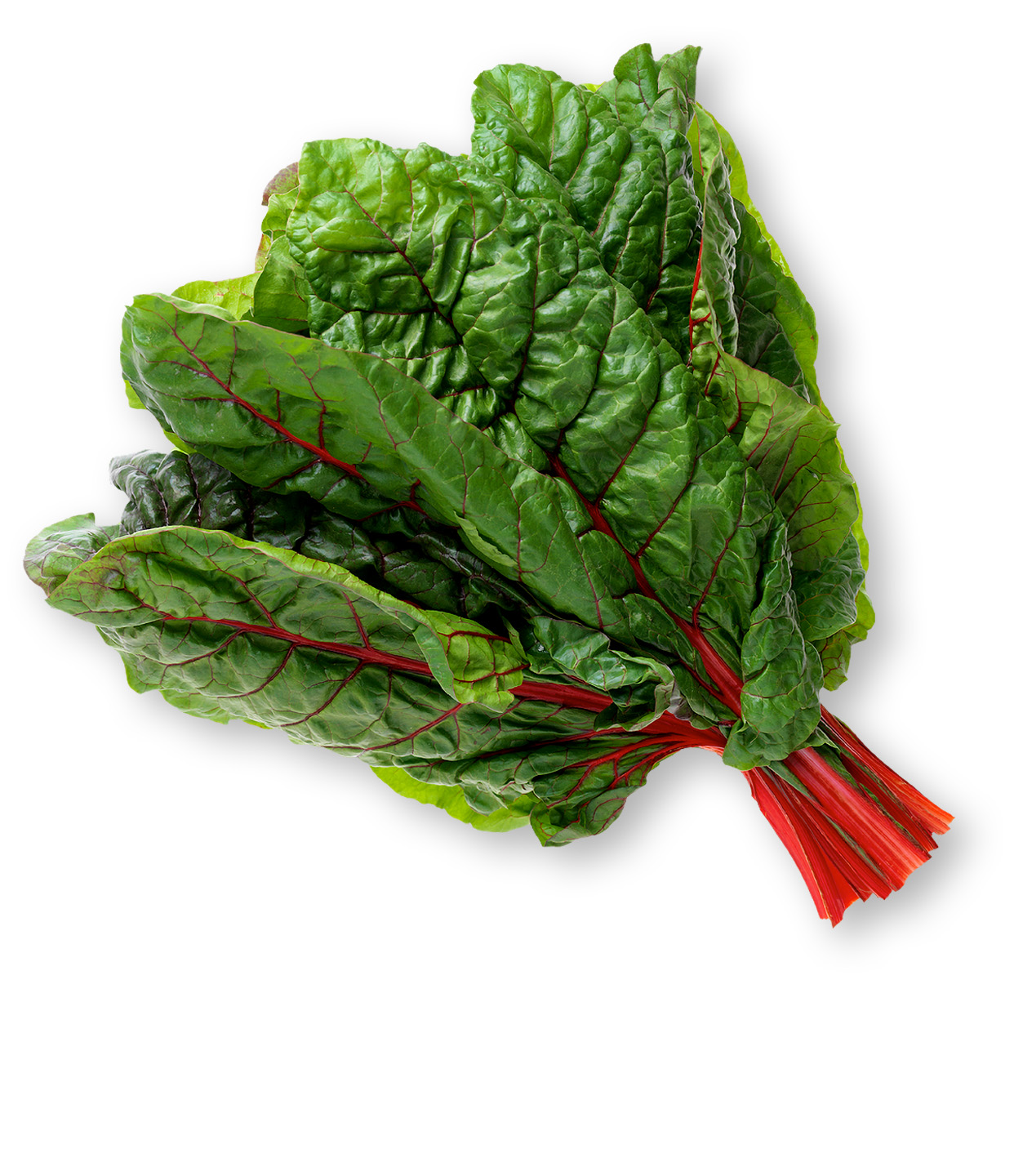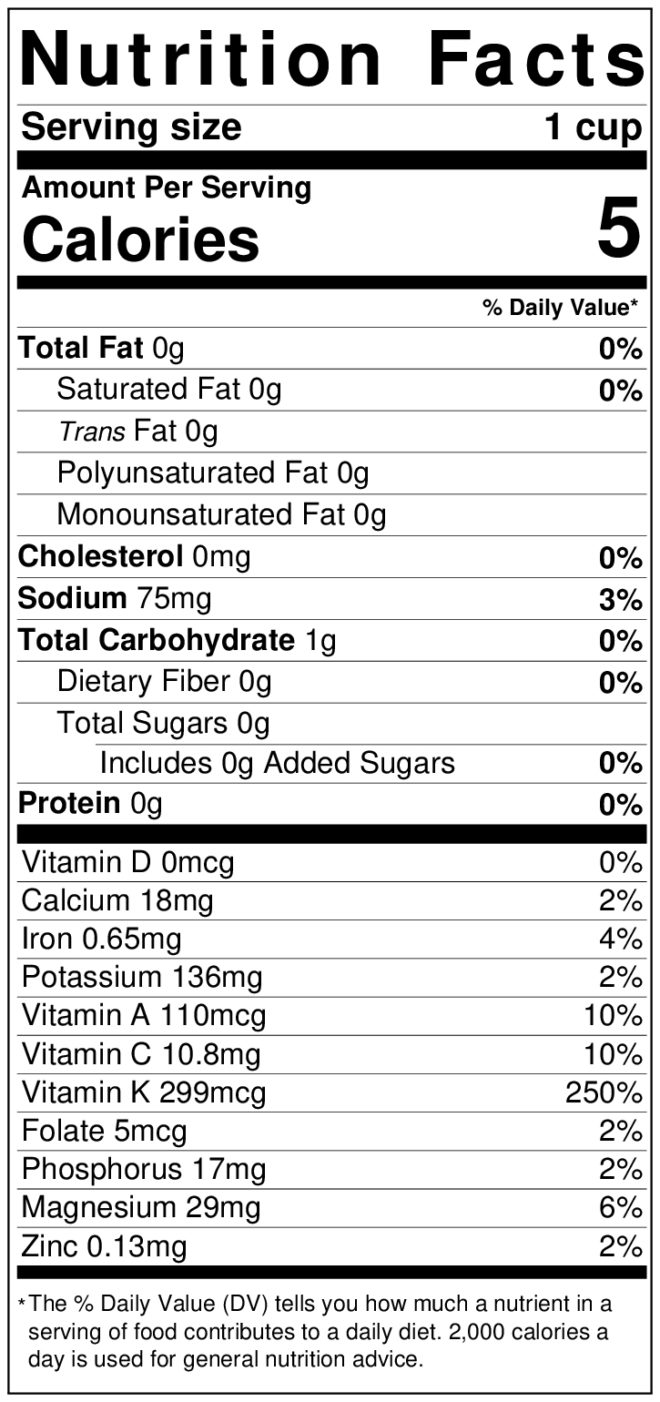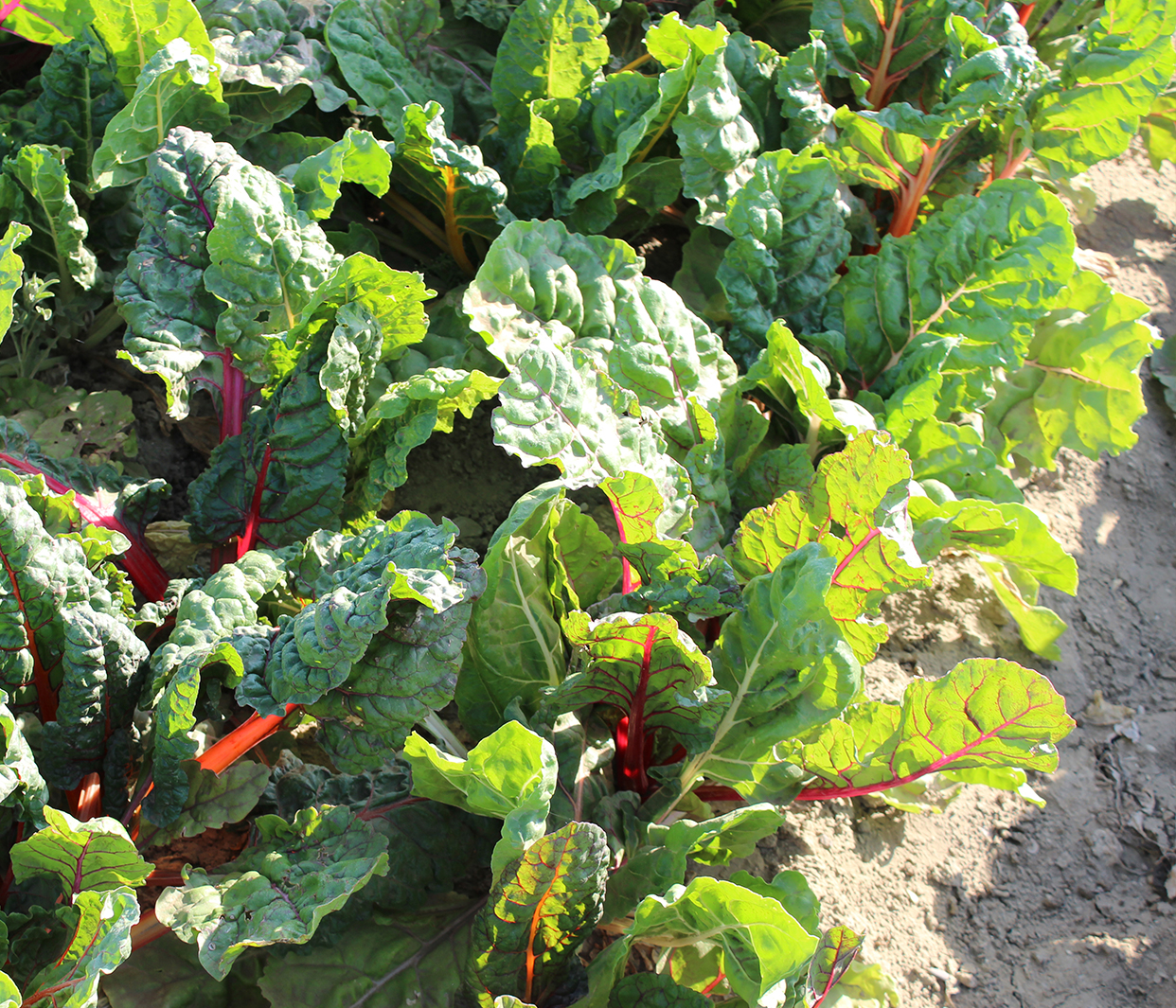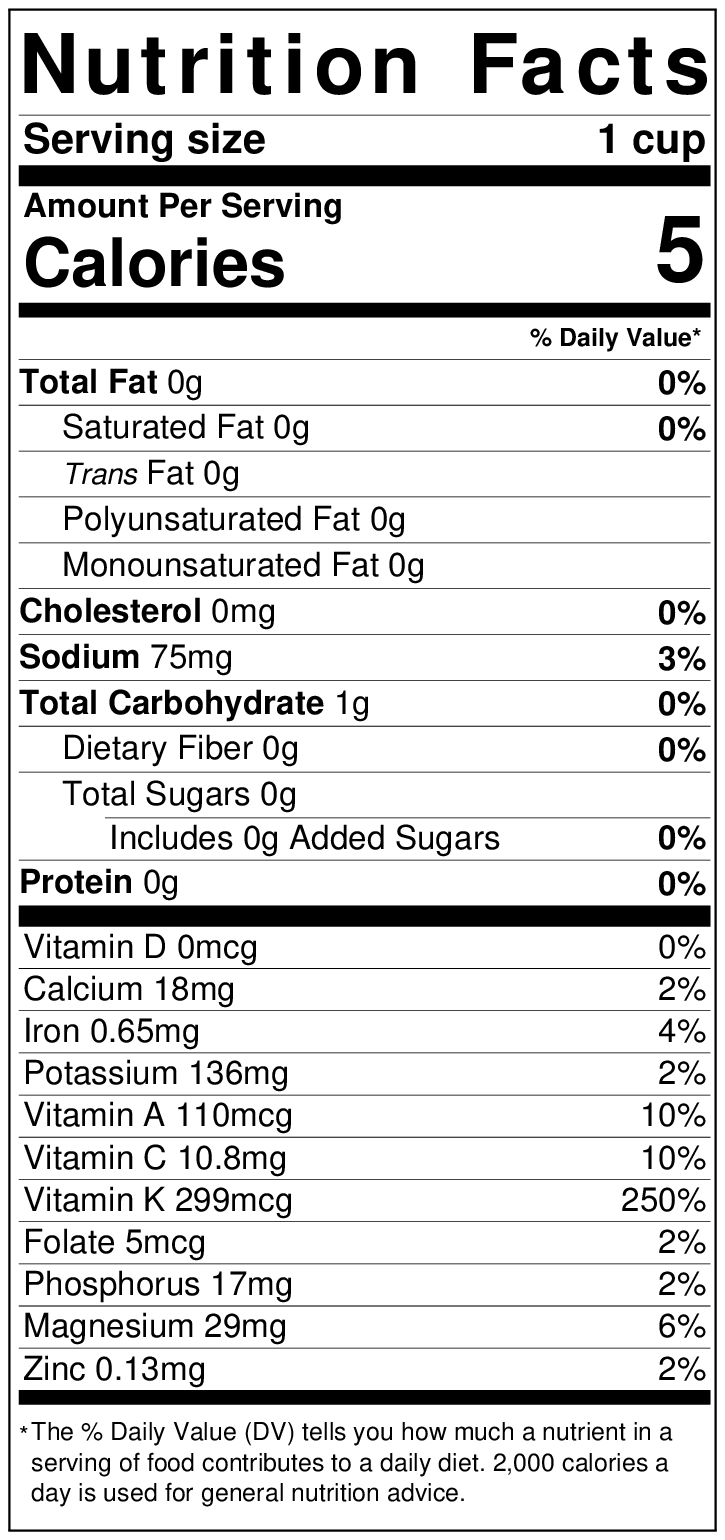Chard, or Swiss Chard, has large green crinkly leaves with celery-like stalks. Like spinach, chard is a member of the amaranth family along with beets. Like other green leafy vegetables, chard is highly nutritious, making it a popular component of healthy diets. Chard has been used in cooking for centuries and can also be eaten raw. The taste can be bitter but is much milder when eaten raw. Chard makes an excellent addition to all kinds of dishes from salads to soups to casseroles.

Chard
Chard Nutrition Facts
- Chard provides an:
- Excellent source of vitamin K
- Good source of vitamin A and vitamin C
- Magnesium, lutein and zeaxanthin


Growing Information
Chard is most often harvested mechanically, or mowed, when it is considered a “baby” and goes to a processor where it becomes part of a salad mix. It can also be hand harvested, bunched, and packed into cartons in the field and then sold in bulk at the grocery store. It typically takes 55 to 65 days from seed to harvest.
Usage Ideas
Chard makes an excellent addition to all kinds of dishes from salads to soups to casseroles.
 Chard Frittata
Chard Frittata
Frequently Asked Questions
Chard can be eaten raw or cooked and makes a great addition to soups, salads, stir frys and more! Find more ways to eat chard here.
Chard has a bitter taste but tends to be much more mild when eaten raw. Learn more here.
In Australia chard is most often called silverbeet. Learn what other names chard goes by here.
Yes! Like all leafy green vegetables, chard is very good for you. Learn why here.
Stay in the Know About Lettuce
Sign up for Health & Safety Alerts
Get the facts about lettuce and why it’s one of the safest and healthiest foods we can eat.

